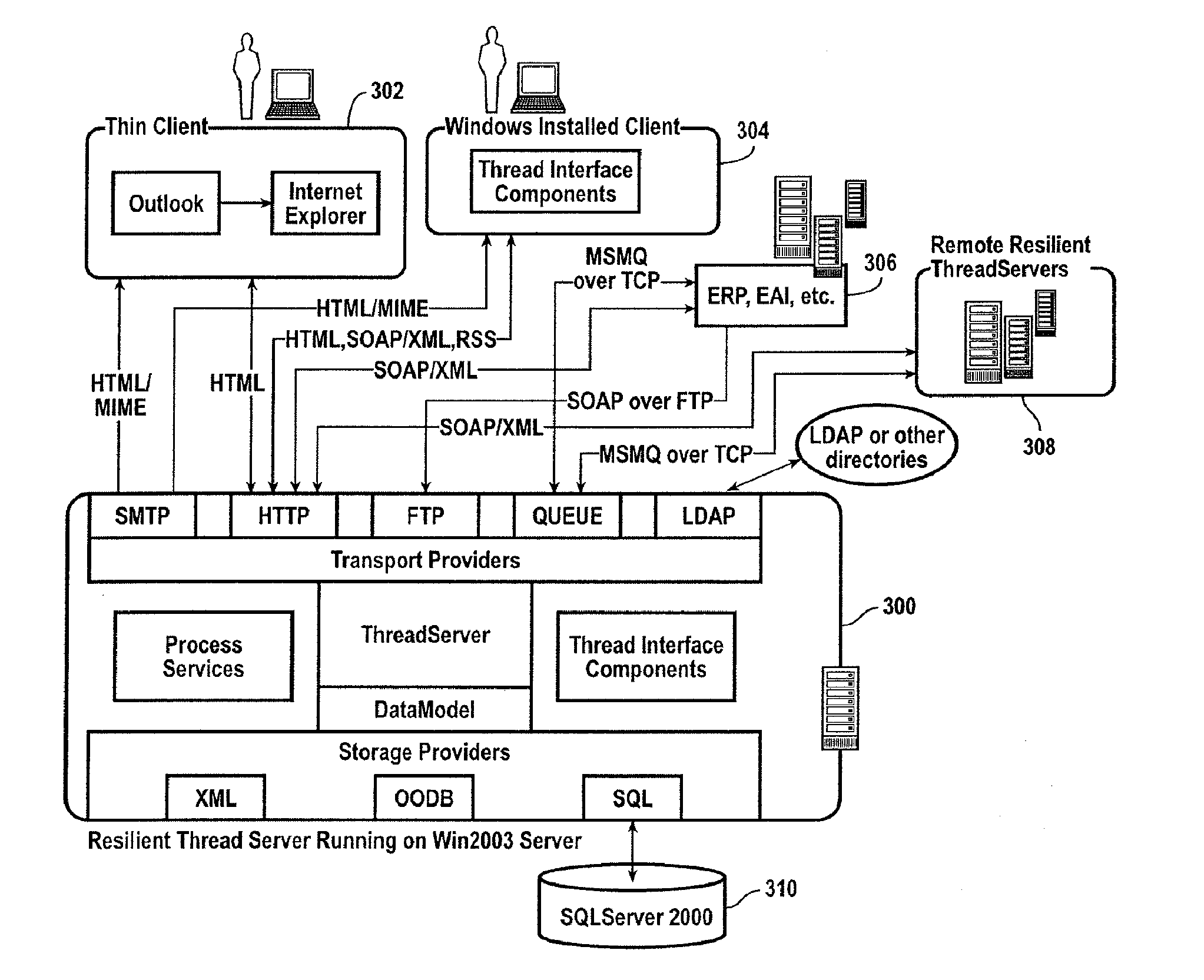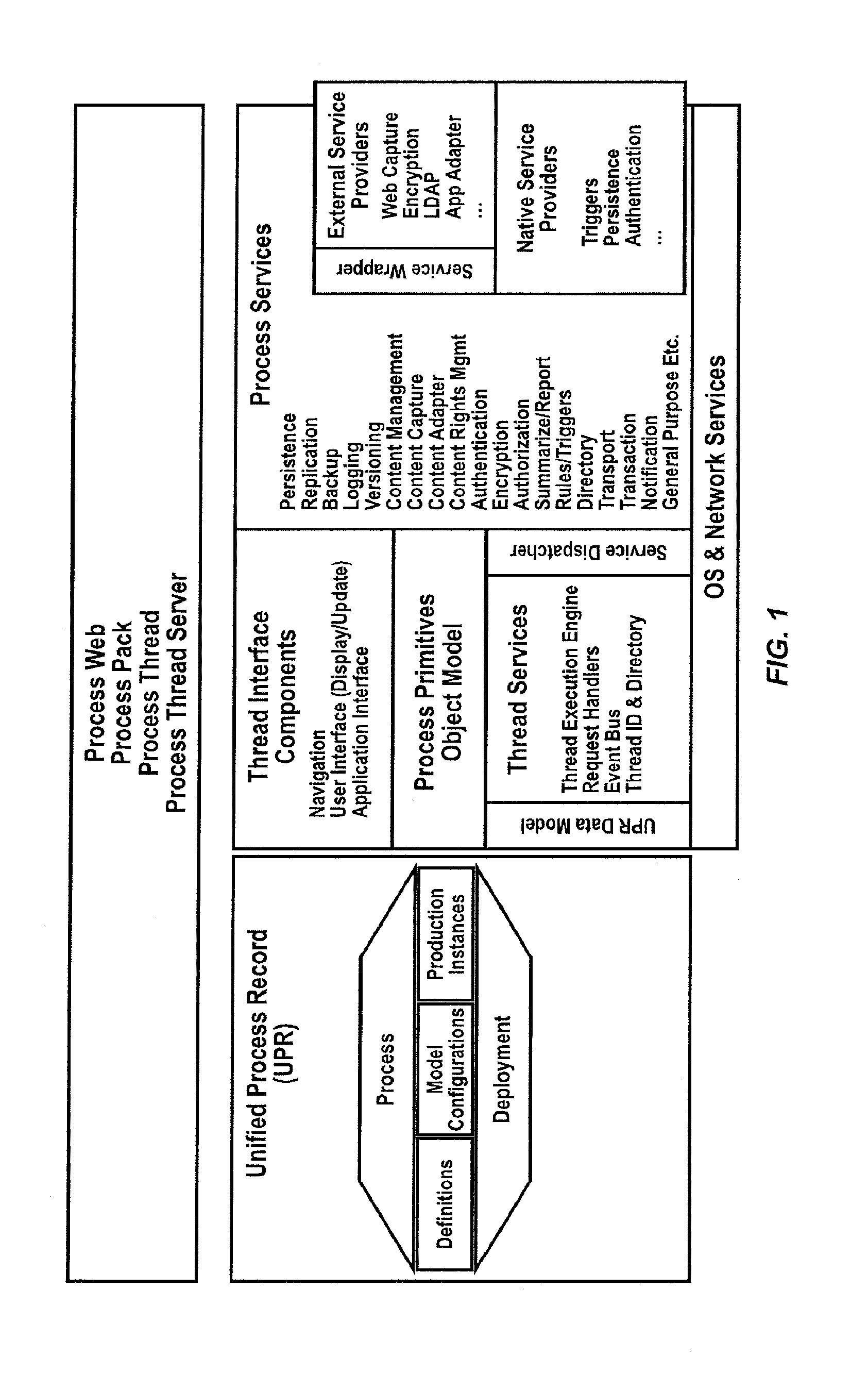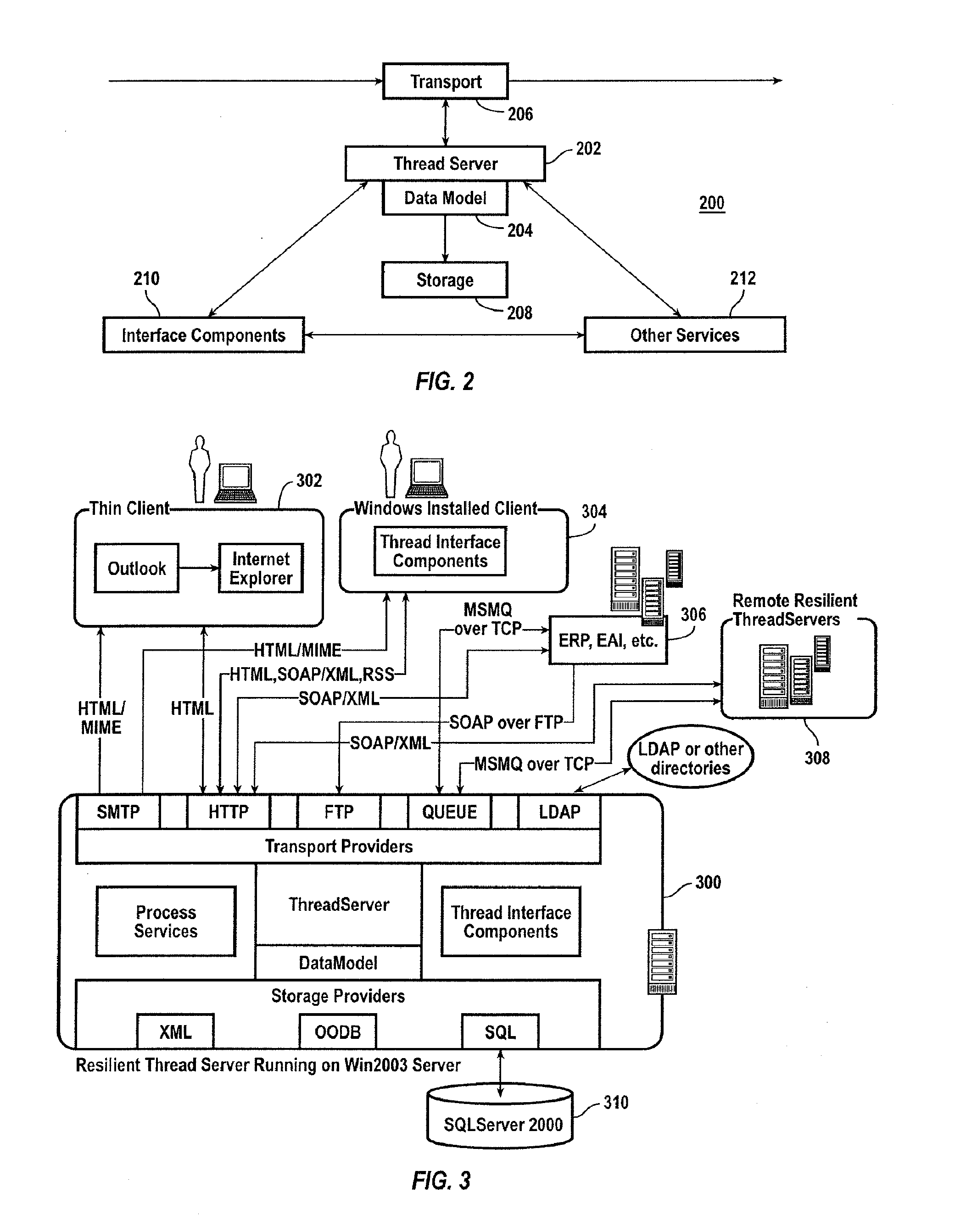Virtual process collaboration
a virtual process and process technology, applied in the field of virtual process collaboration, can solve the problems of not fitting neatly within the functional boundaries of individual enterprise applications, conflicting characteristics of enterprise applications with real world business practices, and traditional approaches to process automation often fail
- Summary
- Abstract
- Description
- Claims
- Application Information
AI Technical Summary
Benefits of technology
Problems solved by technology
Method used
Image
Examples
Embodiment Construction
[0022]FIG. 1 illustrates a functional diagram of a system for organizing collaborative processes in accordance with at least one embodiment of the present invention. As shown in the figure, the system may include one or more of a number of higher level elements such as Process Web, Process Pack, Process Thread, and Process Thread Server. These higher level elements are based on a number of lower level elements, such as Process Primitives Objects Model, Unified Process Record (UPR), Thread Interface Components, Thread Service, and Process Services. The various elements shown in FIG. 1 are described in further detail in sections below.
[0023]According to one embodiment of the invention, the system illustrated in FIG. 1 may be implemented as one or more computer systems and associated UPR data. FIG. 2 presents a computer system 200 and its associated message flows in accordance with one embodiment of the present invention. Here, computer system 200 includes the following software subsys...
PUM
 Login to View More
Login to View More Abstract
Description
Claims
Application Information
 Login to View More
Login to View More - R&D
- Intellectual Property
- Life Sciences
- Materials
- Tech Scout
- Unparalleled Data Quality
- Higher Quality Content
- 60% Fewer Hallucinations
Browse by: Latest US Patents, China's latest patents, Technical Efficacy Thesaurus, Application Domain, Technology Topic, Popular Technical Reports.
© 2025 PatSnap. All rights reserved.Legal|Privacy policy|Modern Slavery Act Transparency Statement|Sitemap|About US| Contact US: help@patsnap.com



